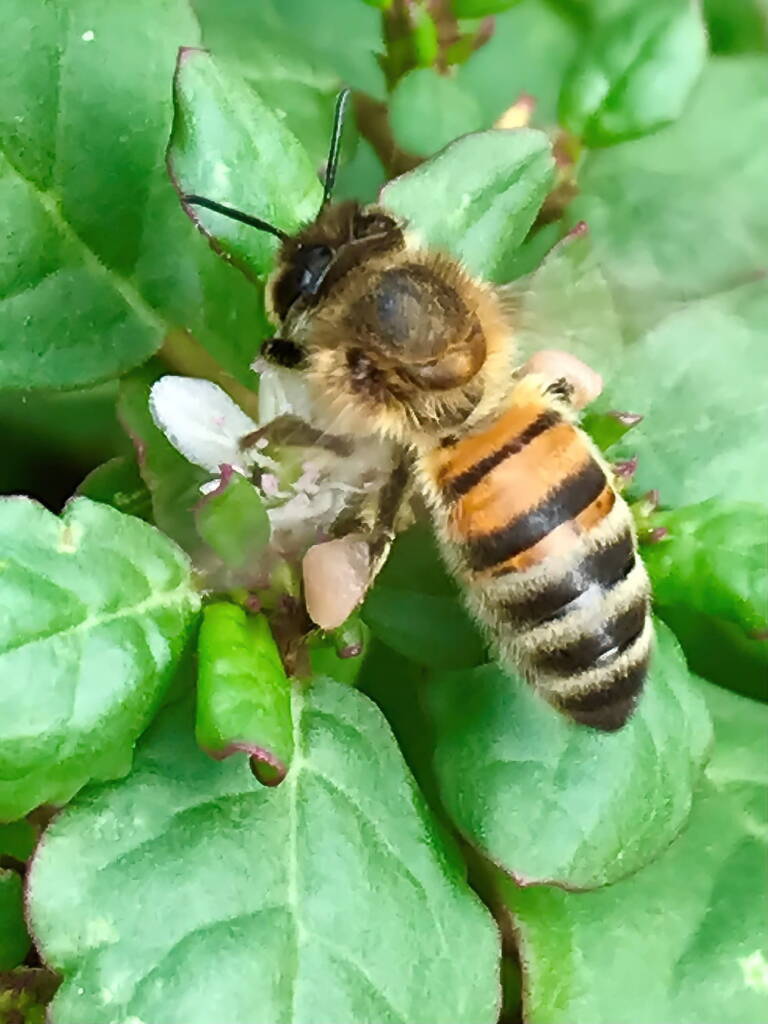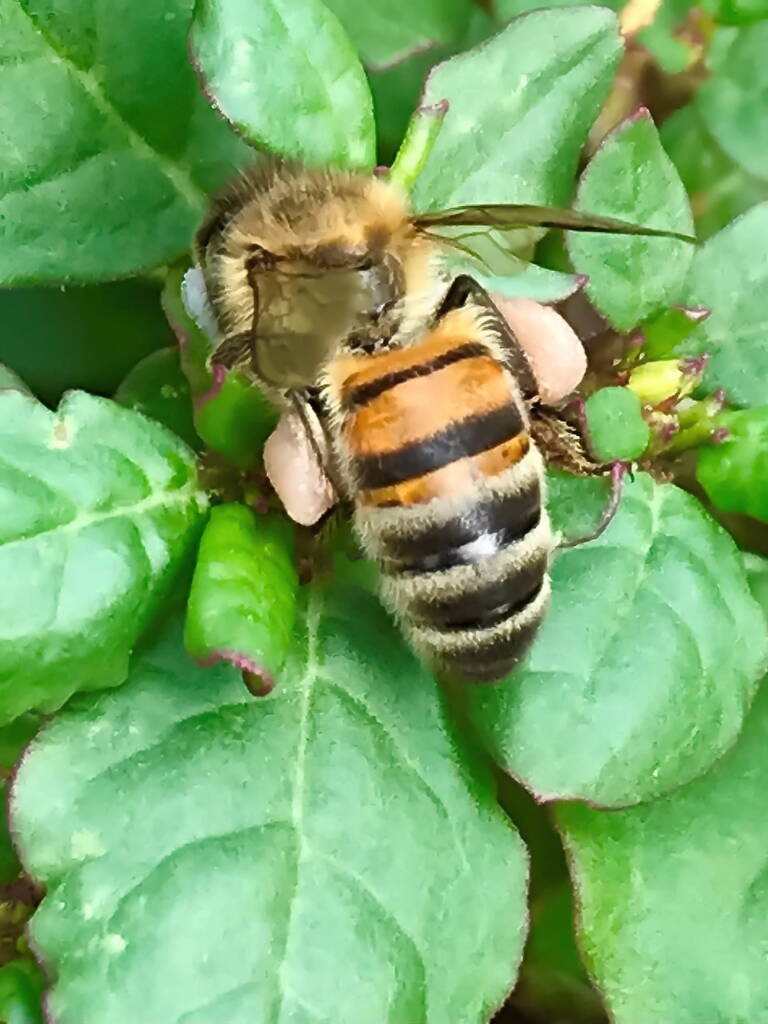Apis melliferaDark Apis mellifera Apis mellifera — Captured flora moments Acacia ligulata Black Pigweed Cape Honeysuckle Citrus Convolvulus cneorum Convolvulus sabatius Duranta Echinacea purpurea Eremophila nivea Eremophila Wildberry Eucalyptus erythrocorys Eucalyptus orbifolia Gazania Gossypium sturtianum Hakea leucoptera Osteospermum Pomegranate Poppy Sturt’s Desert Pea Sweet Basil
Common names for the species Trianthema portulacastrum include Black Pig Weed, Black Pigweed, Desert Horse Purslane, Desert Horse-purslane, Desert Horsepurslane, Desert Purslane, Giant Pig Weed, Giant Pigweed, Horse Purslane, Lowland Purslane, Purslane, and Trianthema.
Trianthema portulacastrum, is also known as Giant Pigweed and is found mainly in the more tropical areas of Australia. As seedlings, Trianthema portulacastrum can sometimes be confused with other species of Portulaca. The adult plant, Trianthema portulacastrum, have leaves that are more rounded and crinkled, the flowers are white, pink to pinkish-purple.
the pollen bags, on the Apis mellifera are pink like the flowers (I’ve only seen that after they’ve been foraging from the pink flowers of the Pigweed) 😊
Di Bickers, Nature Photos from My Garden
The name Pigweed, including Purslane or Wild Portulaca, also described other species in the genus Portulaca. This group of plants are an annual, succulent herb, and whilst some species may be used as edible plants or used for their medicinal properties, some may be toxic. Other growing where they are not wanted are treated as weeds.
The European Honey Bee (Apis mellifera) seen feeding on the flowers of the Black Pigweed (Trianthema portulacastrum).



Photographs © Di Bickers, Nature Photos from My Garden
Footnote & References
- Photographs © Di Bickers, Nature Photos from My Garden, Facebook group, https://www.facebook.com/profile.php?id=100086275255680
- Trianthema portulacastrum L., Weeds of Australia, https://keyserver.lucidcentral.org/weeds/data/media/Html/trianthema_portulacastrum.htm
- Species profile—Trianthema portulacastrum (black pigweed), Queensland Government, https://apps.des.qld.gov.au/species-search/details/?id=16014
- Pigweed, Portulaca oleracea – University of New England (UNE), https://www.une.edu.au/__data/assets/pdf_file/0013/255100/une-weeds-pigweed.pdf
Apis melliferaDark Apis mellifera Apis mellifera — Captured flora moments Acacia ligulata Black Pigweed Cape Honeysuckle Citrus Convolvulus cneorum Convolvulus sabatius Duranta Echinacea purpurea Eremophila nivea Eremophila Wildberry Eucalyptus erythrocorys Eucalyptus orbifolia Gazania Gossypium sturtianum Hakea leucoptera Osteospermum Pomegranate Poppy Sturt’s Desert Pea Sweet Basil
BeesBees Anatomy Bee Behaviour Blogging Bees… Bees – image index Amegilla Bee Apis mellifera Austroplebeia australis Austrothurgus Braunsapis sp Ceylalictus perditellus Colletidae Euryglossinae Exoneura Homalictus Hyleoides bivulnerata Lasioglossum Lasioglossum (Chilalictus) Lipotriches Megachile Meroglossa Stenotritidae Tetragonula Thyreus Xylocopa
